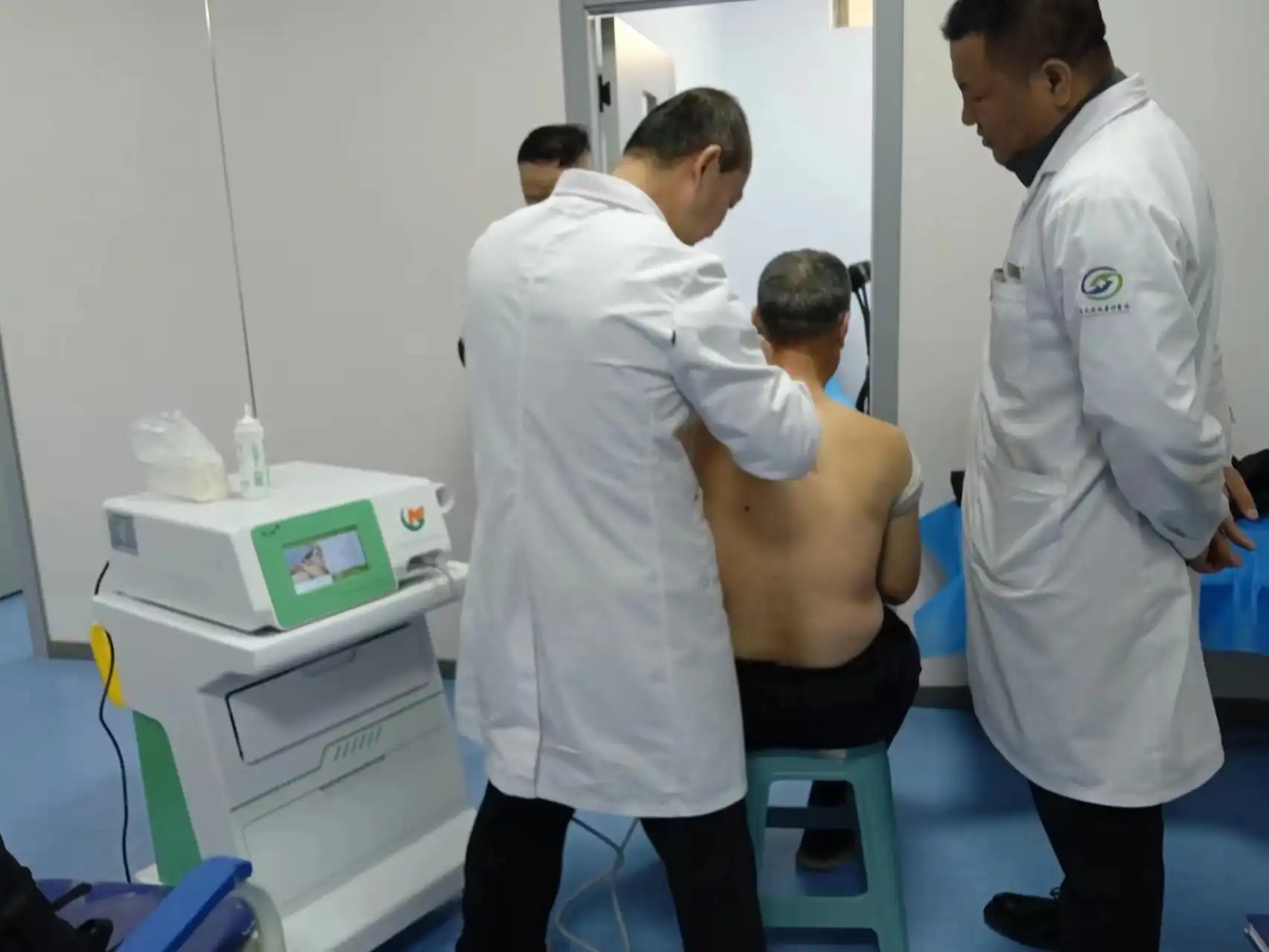Shock wave therapy has gained significant traction in the medical field as a non-invasive treatment option for various musculoskeletal conditions. Among the different types of shock wave therapy devices, the Pulse professional pneumatic shock wave therapy machine shockwave has emerged as a popular choice. In this blog post, we will delve deep into understanding the success rate of shock wave therapy, with a particular focus on the performance of the Pulse professional pneumatic shock wave therapy machine shockwave.

How the Pulse Professional Pneumatic Shock Wave Therapy Machine Works
The pulse professional pneumatic shock wave therapy machine shockwave operates on the principle of generating high - energy shock waves. These shock waves are produced through a pneumatic mechanism, where compressed air is used to drive a projectile. The projectile impacts a treatment head, creating shock waves that are then transmitted to the target tissue in the body.
When these shock waves reach the affected area, they cause a series of physiological reactions. They create micro - traumas in the tissue, which in turn stimulates the body's natural healing processes. This includes the release of growth factors, increased blood circulation to the area, and the activation of cells involved in tissue repair. The shock waves can also break down calcifications and scar tissue, improving the overall function of the treated area.
Success Rates in Different Conditions
Plantar Fasciitis
Plantar fasciitis is a common condition characterized by pain in the heel and bottom of the foot. Multiple studies have investigated the effectiveness of shock wave therapy, specifically using the Pulse professional pneumatic shock wave therapy machine, for this condition. In many cases, success rates of around 60 - 80% have been reported.
Patients who undergo a course of shock wave therapy for plantar fasciitis often experience a significant reduction in pain. In a study involving a group of patients with chronic plantar fasciitis, after 3 - 6 sessions of treatment with the Pulse machine, about 70% of the patients reported a reduction in pain levels by at least 50%. This improvement in pain was also accompanied by an increase in the patient's ability to walk and perform daily activities without discomfort.
Tennis Elbow (Lateral Epicondylitis)
Tennis elbow is another condition where shock wave therapy has shown promise. The success rate for treating tennis elbow with the Pulse professional pneumatic shock wave therapy machine is relatively high, ranging from 50 - 70%.
The shock waves target the inflamed and damaged tendon tissue in the elbow. By promoting tissue repair and reducing inflammation, the therapy helps patients regain normal elbow function. In a clinical trial, patients with tennis elbow who received shock wave therapy using the Pulse machine were followed up over a period of 3 months. At the end of the study, 60% of the patients had either completely recovered or had a significant improvement in their symptoms, with reduced pain during activities such as gripping and lifting.
Calcific Tendonitis
Calcific tendonitis, which involves the formation of calcium deposits in tendons, can be effectively treated with shock wave therapy. The shock waves from the pulse professional pneumatic shock wave therapy machine shockwave are capable of breaking down these calcium deposits. Success rates for treating calcific tendonitis can be as high as 70 - 85%.
In a research study, patients with shoulder calcific tendonitis were treated with the Pulse shock wave therapy machine. After a series of treatments, around 80% of the patients showed a reduction in the size of the calcium deposits, as measured by imaging techniques. This reduction in calcification was also associated with a significant decrease in pain and an improvement in shoulder range of motion.
Factors Affecting the Success Rate
Severity of the Condition
The success rate of shock wave therapy using the Pulse professional pneumatic shock wave therapy machine is highly dependent on the severity of the condition. For mild to moderate cases of musculoskeletal disorders, the success rate is generally higher. For example, in patients with early - stage plantar fasciitis, the success rate may be closer to the upper end of the reported range (around 80%). However, in patients with long - standing and severe cases, where there may be significant tissue damage and chronic inflammation, the success rate may be lower, perhaps around 50%.
Patient Compliance
Patient compliance with the treatment protocol plays a crucial role. Shock wave therapy usually requires a series of sessions, typically ranging from 3 - 6 sessions, spaced a few days apart. Patients who complete the full course of treatment as prescribed by their healthcare provider are more likely to experience a successful outcome. In a study, it was found that patients who missed more than 20% of their scheduled treatment sessions had a significantly lower success rate compared to those who adhered to the treatment plan.
Lifestyle and Rehabilitation
A patient's lifestyle and participation in rehabilitation exercises also impact the success rate. For instance, patients who continue to engage in activities that exacerbate their condition, such as repetitive stress on the affected joint in the case of tennis elbow, are less likely to have a successful outcome. On the other hand, patients who follow a proper rehabilitation program, including stretching and strengthening exercises, along with shock wave therapy, tend to have higher success rates. In a group of patients with plantar fasciitis, those who combined shock wave therapy with regular calf stretching exercises had a success rate that was 10 - 15% higher than those who only received shock wave therapy.
Comparing with Other Treatment Options
When considering the success rate of shock wave therapy using the pulse professional pneumatic shock wave therapy machine shockwave, it is important to compare it with other treatment options. For example, traditional treatments for plantar fasciitis, such as corticosteroid injections, have a success rate of around 40 - 60%. Shock wave therapy, in this case, offers a higher success rate without the potential side effects associated with corticosteroid injections, such as tendon weakening and skin atrophy.
In the case of tennis elbow, physical therapy alone has a success rate of approximately 40 - 50%. Combining physical therapy with shock wave therapy using the Pulse machine can increase the success rate to around 60 - 70%, highlighting the added value of shock wave therapy in treating this condition.

Shaanxi Miaokang Medical Technology Co., Ltd had R&d and produce pulse professional pneumatic shock wave therapy machine shockwave
is a comprehensive integrator engaged in medical instrument research and development, sales, medical technology research and promotion, and investment in medical institutions. The main research and development of medical ozone therapy equipment, extracorporeal shock wave therapy equipment and other products.
Conclusion
The success rate of shock wave therapy, specifically when using the Pulse professional pneumatic shock wave therapy machine, varies depending on the condition being treated, the severity of the condition, patient compliance, and lifestyle factors. Overall, it has shown promising results in treating various musculoskeletal conditions, with success rates often ranging from 50 - 85% across different disorders. However, it is essential to note that individual results may vary. As with any medical treatment, patients should consult with their healthcare providers to determine if shock wave therapy is the right option for them and to understand what to expect in terms of potential outcomes.
If you have any further questions regarding shock wave therapy or the Pulse professional pneumatic shock wave therapy machine, feel free to reach out to us at cathy@miaokang.ltd.






